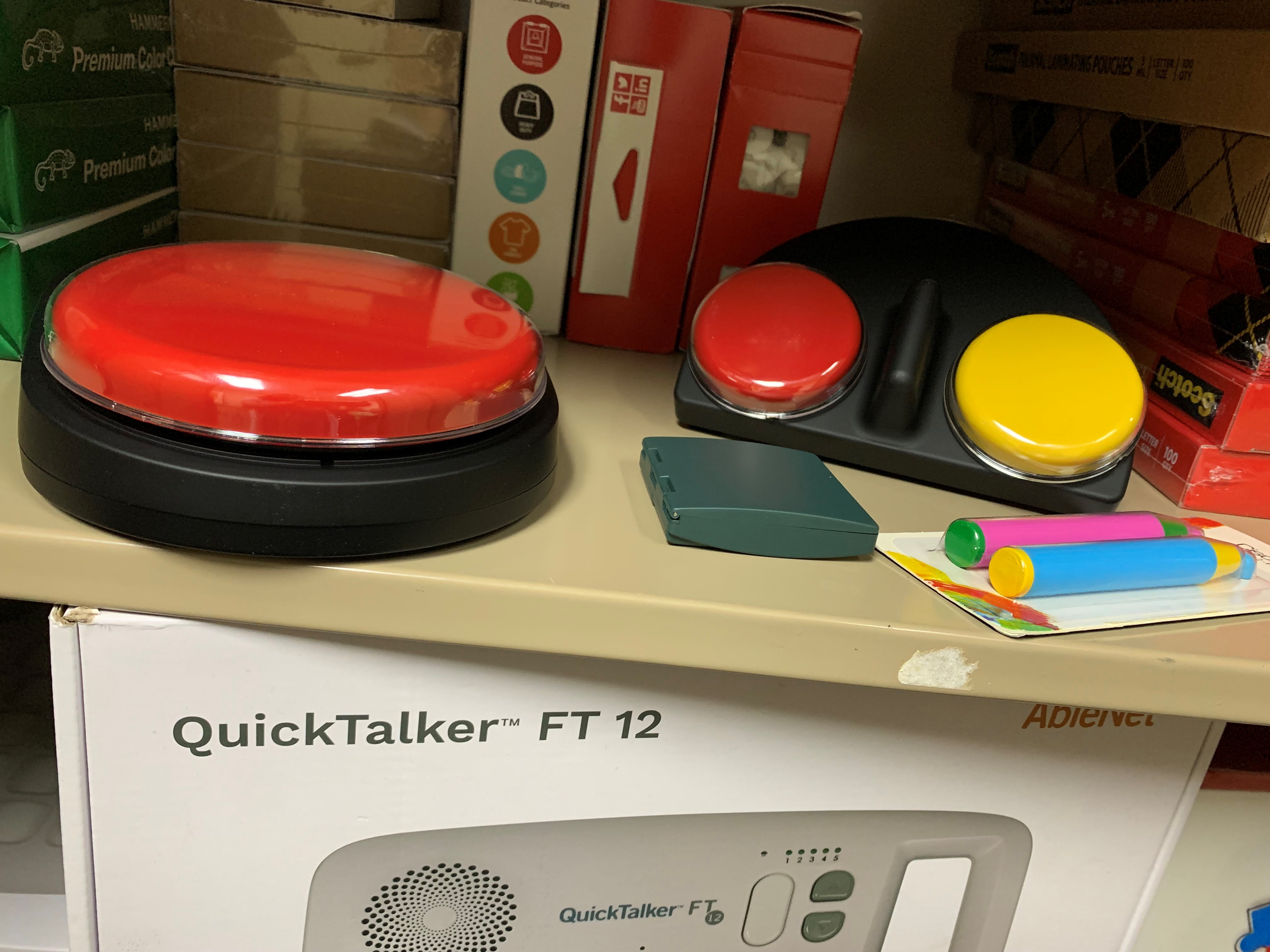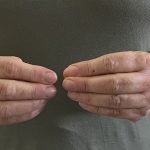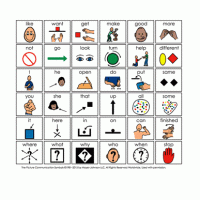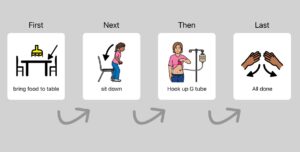
Augmentative and Alternative Communication (AAC)
“AAC means all of the ways that someone communicates besides talking. People of all ages can use AAC if they have trouble with speech or language skills. Augmentative means to add to someone’s speech. Alternative means to be used instead of speech. Some people use AAC throughout their life. Some people may use AAC only for a short time like when they have surgery and can’t talk. There are a lot of different types of AAC.
No-tech and low-tech options include things like
- gestures and facial expressions,
- writing,
- drawing,
- spelling words by pointing to letters, and
- pointing to photos, pictures, or written words.
High-tech options include things like
- using an app on an iPad or tablet to communicate and
- using a computer with a “voice,” sometimes called a speech-generating device.”
(Info taken from ASHA)


NO-TECH OR LOW-TECH AAC
No-tech AAC relies solely on the user’s body for communication. It doesn’t require any external tools or devices.
Examples include:
- Gestures and body language: Using gestures like pointing, nodding, or facial expressions to communicate.
- Sign language: Using formal sign languages like American Sign Language (ASL) or regional sign languages.
- Facial expressions and vocalizations: Expressing emotions and needs through facial expressions, vocal sounds, or noises.
Low-tech AAC involves simple, non-electronic tools such as communication boards, picture cards, or letter boards. They are often cost-effective and portable.
Examples include:

MID-TECH AAC
Mid-tech AAC includes devices that are battery operated and store a pre-recorded message.
Examples include:


HIGH-TECH AAC
High-tech AAC systems include electronic devices like tablets, dedicated communication devices, or computer software with advanced features, customizable vocabularies, and voice output. Some speech generating devices are dedicated devices loaded with just speech generating software. Some speech generating devices are non-dedicated devices (eg. an iPad loaded with a speech generating app).
Users can access the systems in different ways such as:
- Touch access such as touching a picture or typing a word.
- Eye Gaze and Head-Tracking access. Some individuals with severe motor impairments can use eye gaze or head-tracking technology to select symbols or words on a screen, which is then converted into speech.
- Switch Access. For individuals with limited motor control, switch access AAC systems use external switches or buttons that the user can activate to select symbols or words.
- The Tobii Dynavox SC Tablet or the TD Snap app on an iPad
- The LAMP Words for Life system
- The Proloquo2Go app on an iPad
- The Tobii Dynavox TD Pilot eye controlled communication device
